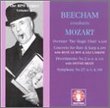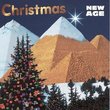| All Artists: Sessions, Helps Title: Piano Sonatas 1-3 / From My Diary Members Wishing: 0 Total Copies: 0 Label: Composers Recordings Release Date: 9/15/1998 Album Type: Import Genres: Jazz, Classical Styles: Forms & Genres, Sonatas, Historical Periods, Modern, 20th, & 21st Century, Symphonies Number of Discs: 1 SwapaCD Credits: 1 UPC: 090438080026 |
Search - Sessions, Helps :: Piano Sonatas 1-3 / From My Diary
 | Sessions, Helps Piano Sonatas 1-3 / From My Diary Genres: Jazz, Classical
|
CD DetailsSimilar CDs
|
CD ReviewsLots of notes, serious stuff, not for the casual listener Discophage | France | 11/05/2007 (4 out of 5 stars) "The piano music of Roger Sessions featured on this disc was written over a time-span of 35 years (missing are four early Pieces for children, the late Five Pieces for piano from 1975 and Waltz from 1978, and a recently discovered, early Adagio). The 1st Sonata is from 1930 and came shortly after the composer's First (and not entirely significant) Symphony. Next came the 4 pieces comprising "From my Diary", written between 1937 and 1940 and making up a quasi-Sonata with slow introduction. The 2nd Sonata proper was composed in 1946, at the same time as the completion of the Second Symphony. Nearly 20 years elapsed before the 3rd Sonata (1965), during which Sessions wrote three more symphonies. The style remains remarkably consistent throughout, though. The First begins in a bitter-sweet and dreamy mood reminiscent of Prokofiev's late Sonatas, giving way without pause to an Allegro gradually rising to a more agitated, dissonant and dramatic atmosphere. The movement concludes with pounding chords evocative of Ruggles or Rudhyar (4:05), while the slow movement starts with the same material as the introductory Andante. Only in the finale can one hear traces of the composer's early, neo-classicist style. At times it sounds like a Ravel Sonatine gone atonal. In the furious first movement and the violently pounding last one of the 2nd Sonata one can hear again some traces of Prokofiev, but this would be a dissonant, atonal and disjointed Prokofiev. The middle movement is dreamy and pensive, and stern. It is Ives that sometimes comes to mind in the piling of notes to the point of cacophony that marks some passages of "From My Diary (Allegro con brio, track 9) or the 2nd movement, "Molto allegro e con fuoco", of the 3rd Sonata. At 0:40 within the same "Allegro con brio" from "From My Diary", introducing a more appeased trio section there is a short, swaying ostinato in which I hear a fleeting reference to Schoenberg's op 11/2, and in its short "Larghissimo e misterioso" (track 10) as well as in the muscular "Allegro pesante" (track 11), I hear the terse, stern, weighty, granitic meditations and discharges of power of Ruggles. In the 3rd Sonata, the fast and agitated movement mentioned above is framed with two slow ones, the first of which bearing the same "Misterioso" indication as the third page of Sessions' Diary : "Adagio e misterioso, sostenuto" and likewise, the meditative dissonant counterpoint of Ruggles comes to mind. In these two slow movements the mood also distantly recalls Berg's Sonata, but without the sensuousness. I am not implying that the music is derivative or imitative in anynway, and am mentioning these possible reminiscences only to give the reader not acquainted with the piano music of Sessions an idea of what it may sound like. In general the music elaborates on basic intervals with no particular melodic distinction: one feels that Sessions doesn't have a natural knack (or particular interest) for melody, and that his music is based on other parameters, like the the intricacy of the dissonant counterpoint, the muscularity of utterrance, the busy digital activity, the furious energy of the fast movements, the meditative weight of the slow ones. There is nothing seductive and sensuous in this music, and little sense of humor. Sessions is no inventor in piano sound either, in the manner of Cowell, Cage or Crumb. He prolongs a line that goes back to Bach and moves through Beethoven, Brahms and Schoenberg. The resulting music is stern and demanding, challenging both on performer and listener - but I suspect that it is more captivating to play than to hear. I don't have much piano music of Sessions in my collection to compare this one with,, and in particular not the 1995 recording by Barry Salwen on Koch International / Albany (which includes the 5 late Pieces and the Waltz but not the Adagio: Complete Works for Solo Piano or Complete Works For Solo Piano: Sonatas I-III, From My Diary, Waltz, Five Pieces For Piano), but composer and pianist Robert Helps has unique authority in this music. Starting in 1944, he was closely associated with Sessions, both as his private student in composition and as a long-time advocate of his piano music, playing it from when it was still fresh from the pen, so to speak, to the days of these recordings. Among them, only the Sonata No. 1 is an older, studio recording, dating from somewhere in the sixties and first published on LP as CRI SD 198, with William Mayer's First Sonata played by William Masselos (now on Masselos plays Mayer and Rudhyar). The sound is somewhat distant, like old memories. The rest are concert takes from 1996 and '97, with a little bit of audience noise (some coughts in "From My Diary"), but nothing obtrusive. Where I do have comparative versions, I usually find Helps preferable: in "Diary", he is not always as cleanly articulated, but more animated and agitated than Roger Shields (Piano Music In America 1900-1945), making a better case for the music, and likewise in the First Sonata he is more animated than Christopher O'Riley (in a recital in which he plays the piano music of John Adams and a small piece by composer... Robert Helps:Robert Helps, John Adams, Todd Brief, Roger Sessions) in the slow sections, laudably de-sentimentalizing the music, and has more snap in the fast ones, making the finale sound almost like Poulenc. In the 2nd Sonata again, he plays with more fury but not as clean and crisp articulation as Peter Lawson (American Piano Sonatas), who consequently gives it a more neo-classical tinge. I also find that Lawson better conveys the dreamy and meditative atmosphere of the 2nd movement. Helps' distant recording doesn't help either, depriving the music of some impact. " Best of Breed B. F. Posner | New York, NY United States | 04/22/2003 (5 out of 5 stars) "If you like Roger Sessions's piano music, or are curious about it, you cannot do better than this CD. Robert Helps is a rare breed of composer pianist who combines a composer's interpretive insight with a transcendent technique."
|

 Track Listings (14) - Disc #1
Track Listings (14) - Disc #1

